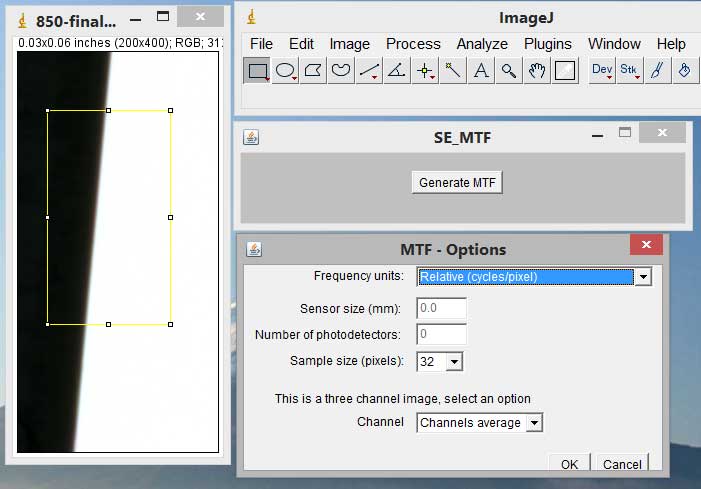
Epson Perfection V850 Pro the review - The MTF
A "MTF analyze" of the Epson Perfection V850 Pro, compared to Canon FS4000US and Epson V700
I did this just because I thought it could be fun. In reality it was quite boring and I didn't find it particular useful for scanner comparison. I find a sharp image with lots of detail to be much more interesting and understandable than a slanted edge analyze. I did this because of curiosity and the fact that I wanted to find out how it works and if it could help me in my future reviews. The value of this is up to you to judge but up to now I have done this on the Epson V850, Epson V700, Canon Canoscan 9950F, Canon 9000F, the filmscanner Canon FS4000US and my Nikon D7000 (Last was just to have a reference to....if it works maybe?)
I have used the free software ImageJ and the plug-in "SE MTF 2XNyquist" the target was constructed from a high quality razor blade and a slide frame.

Above a set of curves for a theoretically perfect lens or scanner in a slanted edge analyze.
In short ESF should be steep, LSF pointy and MTF like a straight wedge (For scanners as far as I understand for lenses it would have been a straight line at the top).
The Epson V850 Pro MTF, LSF and ESF curves
The same curves for the Epson V700
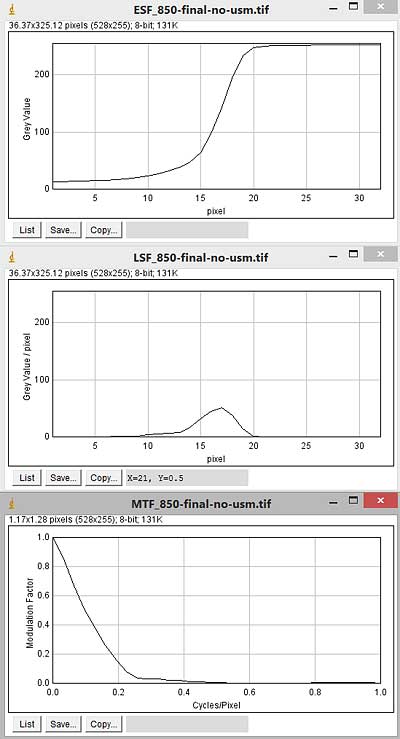
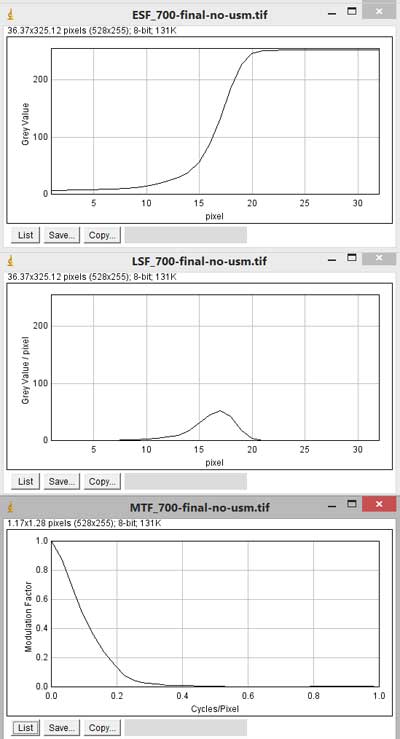
As you can see the MTF curve for the Epson V850 Pro looks almost exactly like its older brother the V700.
Based on the slanted edge analyze both scanner should perform equal in regards of image quality and sharpness.Below the razor edges at 700% enlargement from a 6400dpi scan. The edge of the razor blade is the dark gradient to the left of the scanner model numbers.
The Canon FS4000US curves looks like this.
And this is how a 8000dpi syntetic slanted edge tif file built in a image editor looks like.
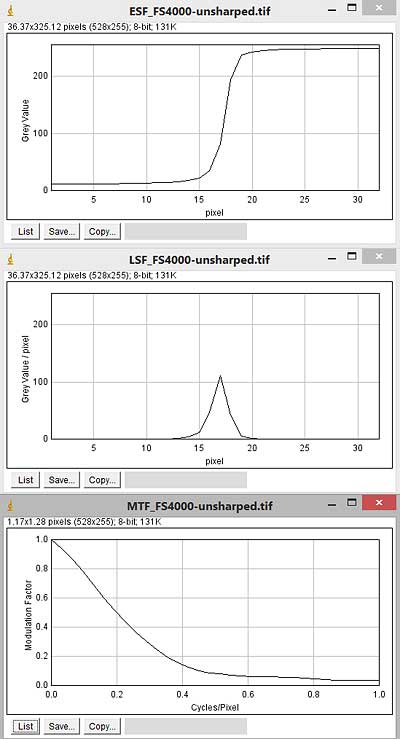
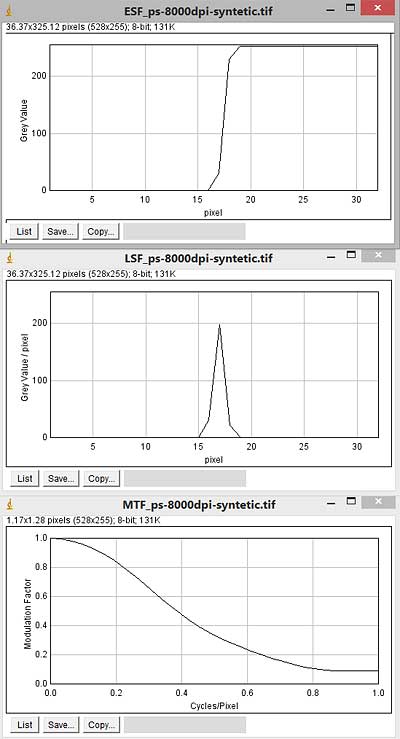
Just for fun, below:A slanted edge analysis of my Nikon D7000/Sigma70mm 1:2.8 DG Macro
I jus go on untill I get bored, her is the MTF curves for Canon canoscan 9000F (Mk1) I guess (kind of know) that the mk2 is about the same all that changed is that the lights become LED on the mk2
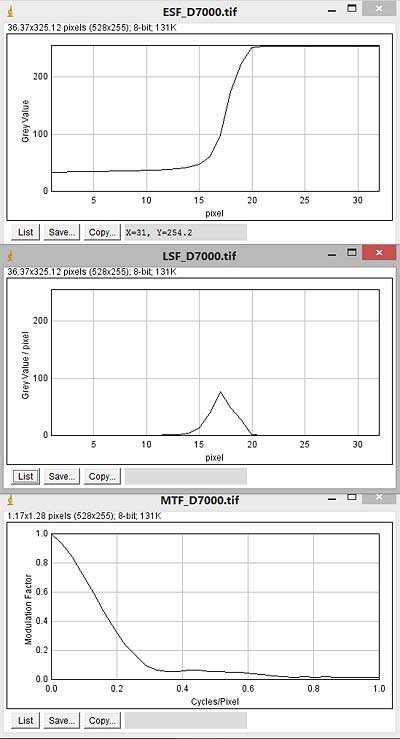
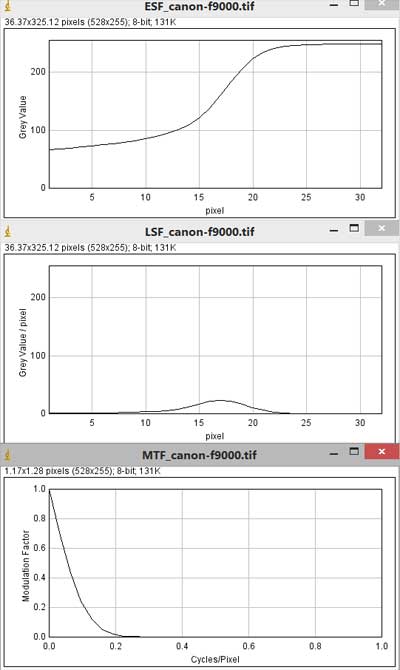
The 9000F looks quite a bit softer than the others on this page and the Canon 9000F is known to be a good contender and about as good as the Epson V600 which I don't have available.
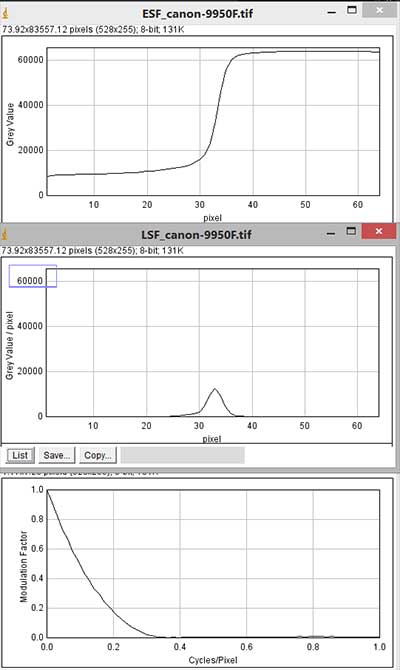
Finally my old thrust Canon canoscan 9950F that have at its time was a bit better than the Epson 4490 and have also been considered as a competition to the V700 in some areas.
Look at the curves they say a lot about this scanner. I wish Canon would reincarnate it again, change it to LED lights improve the film-holders which sems to be a common point of cheating with flatbeds.(With height adjustments or even better put auto-focus on it) and they should have a great competitor to the V850.
The Canon 9950F does also have some advantages against all Epson's in respects of dust removal. I find FARE to be quite a bit better than ICE on that and also works on reflective scans (A dust removal feature that beats both FARE and ICE on transparency can be found in Vuescan PRO).
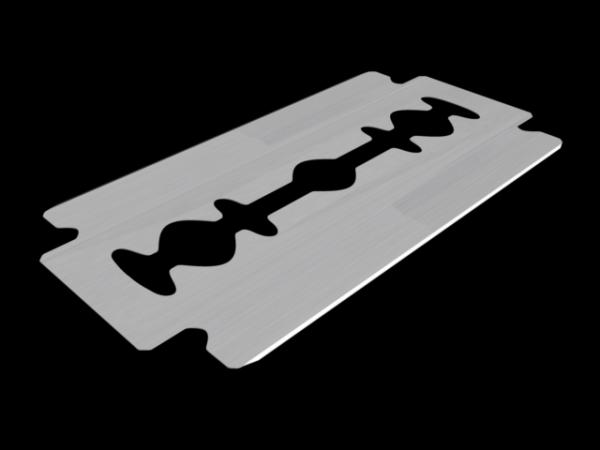
Typical improvised test target for slanted edge analysis.
A razor blade mounted in a slide frame.
ImageJ with Slant edge plug-in in action, the scanned target to the left (Just a small section of the edge). And the selected ROI (Region of Interest) is marked by yellow frame. Now just chose options and hit the OK button and it will generate the curves for you.
Some other Epson V850 Pro resolution tests (Make sure to read the disclaimer!)
This is a few scans of a DIY "USAF-1951" target plus a part of a DIY "ISO 12233" test chart. Non of those live up to any ISO standard. The targets are first printed on a laser printer at a large size to get good visual quality the photographed with fine grain slide film (Kodak Ektachrome E100G) the "USAF-1951" square occupies 4x4mm on the 35x24mm film. The V850 pro image is scanned at 6400ppi and then scaled to 4000 to match the Canon FS4000 scan there is no reason to worry about that since there is nothing more to see on the 6400 original scan. Enjoy.
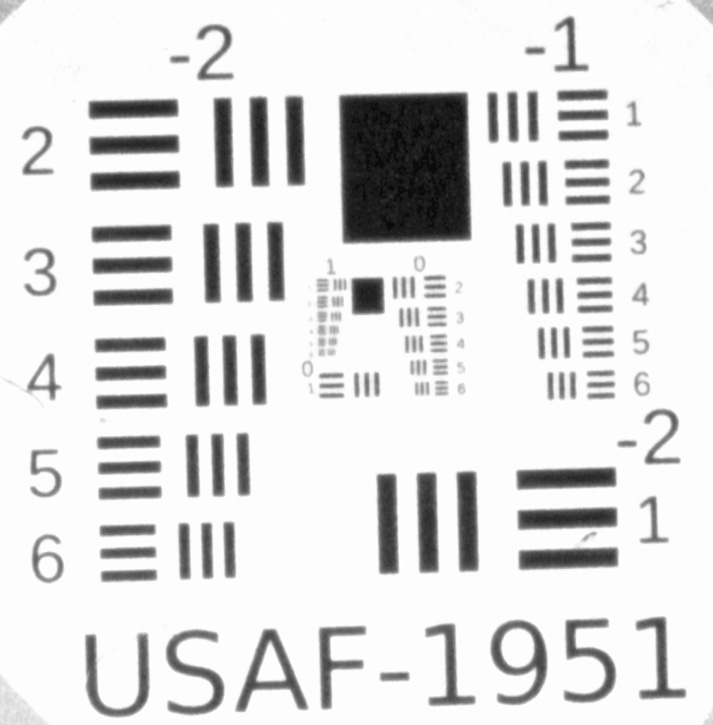
Above: Epson V850Pro no sharpening applied this is a 4x4mm part of the slide that are scanned at 6400ppi and then downscaled to 4000 not bad at all!
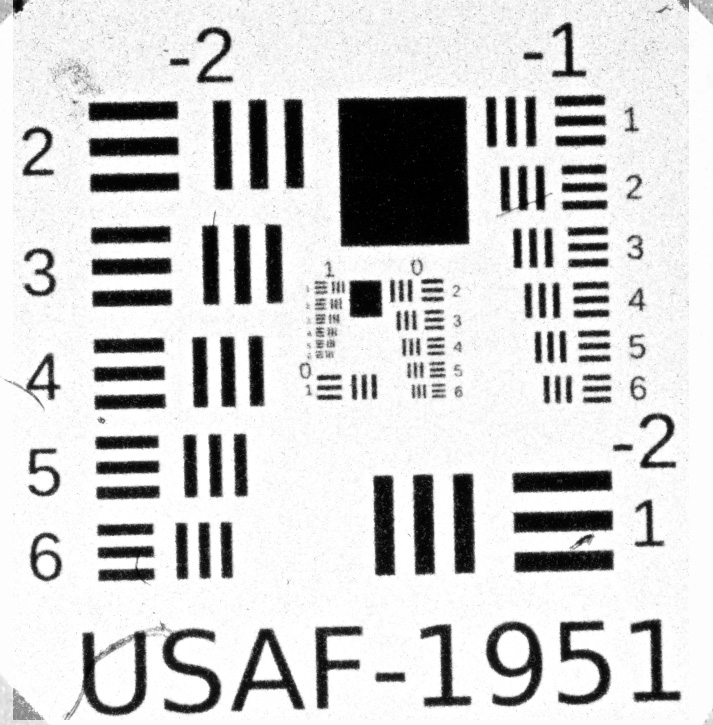
Above: Canon FS4000US no sharpening applied this is the same 4x4mm part of the slide that are scanned at 4000ppi. It is possible to find separation in all segments.
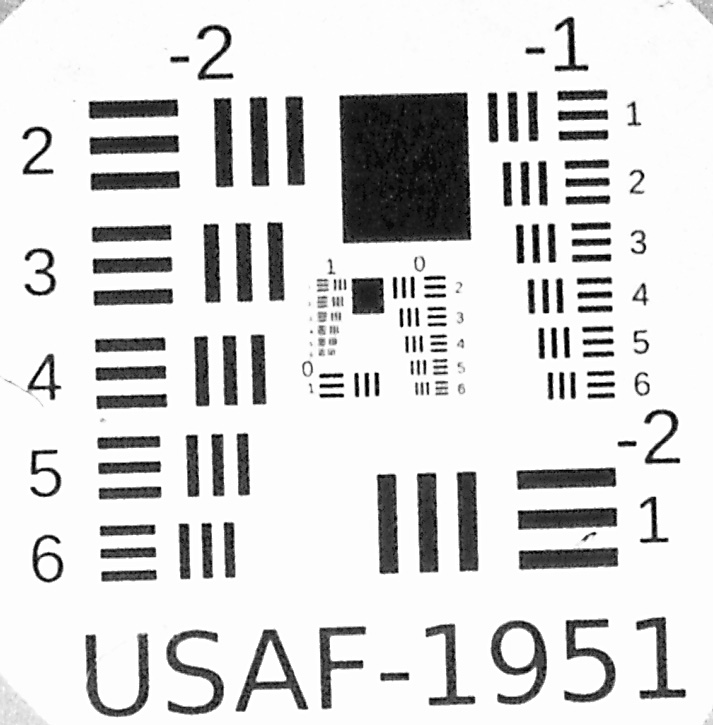
Above: Epson V850Pro same 4x4mm sample again now with sharpening applied (A500 R2.0 T2). Not quite up to the standards of the FS4000 but still impressive in my eyes!
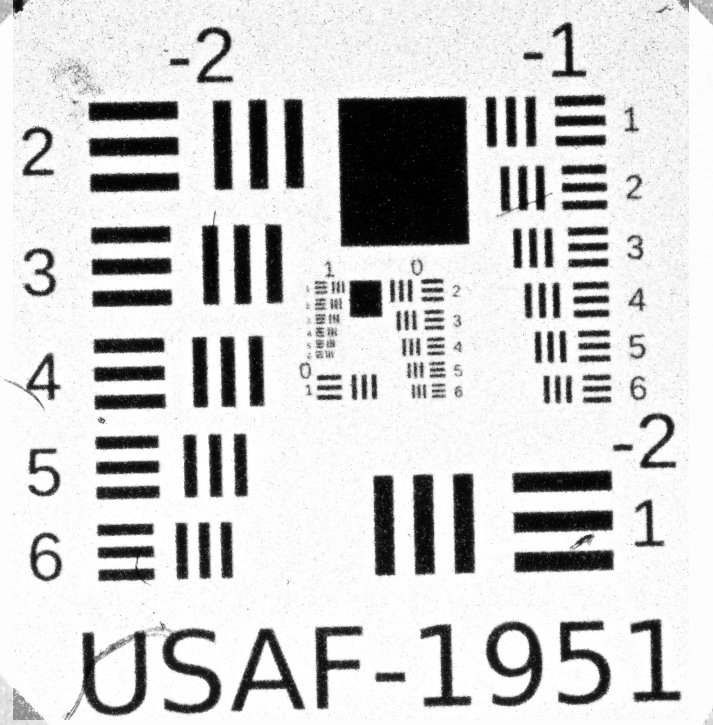
Above: Canon FS4000US same 4x4mm sample again now with a small amount of sharpening applied (A100 R0.3 T5).
Now the DIY "ISO 12233" test chart crops.
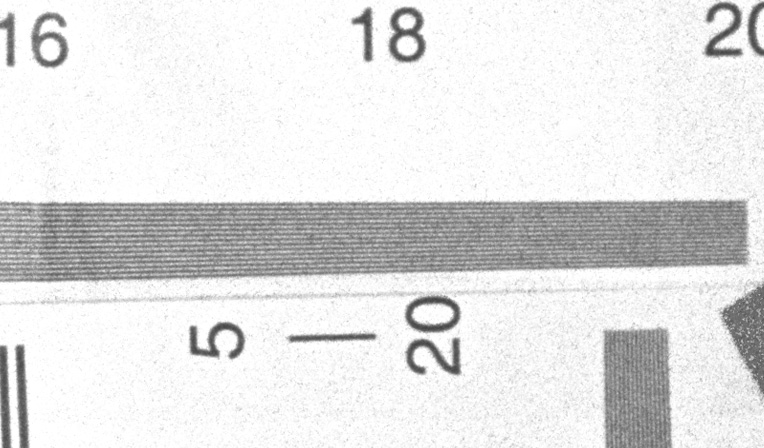
Above: The Canon FS4000US no sharpening, scanned at 4000ppi just remember this is NOT a genuine test chart and the scale is NOT correct by any means it just there so that you can compare it to the next image to get a sense of the difference between a great flatbed scanner and a good old film scanner ;-)
You can easily count the lines on the wedges in this crop all the way to the end.
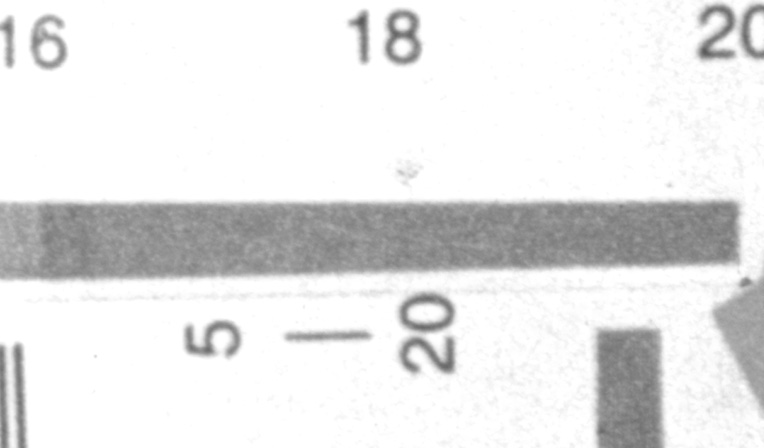
Above: Epson V850 Pro and the same crop again. This time from a scan at 6400ppi that are downscaled to 4000ppi no sharpening applied. It was pointless to add any sharpening since there is no detail that can be rescued in the wedges at all!
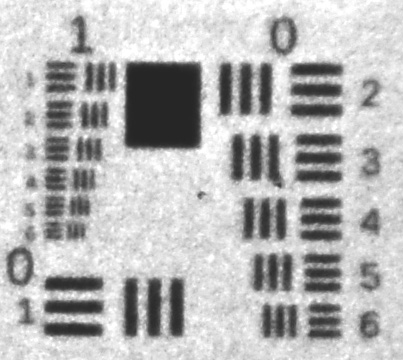 |
Just for fun: The DIY USAF-1951 photographed with NIKON D7000 and a Microscope lens for industrial quality control. Only the center section photographed this is a 100% crop and is equal to approximately a 60x enlargement. Note that the Kodak Ektachrome E100G film grain is clearly visible. |
Resources (Links)
- About slanted edge method (PDF)
- Slant Edge MTF plug-in for ImageJ
- ImageJ free image analyze software
- WIKI about Optical Transfer Function
- The VueScan Bible: Everything You Need to Know for Perfect Scanning (English and English Edition)
- Scanning Negatives and Slides: Digitizing Your Photographic Archives

